From Jesse James to Robert Leroy Parker, these legendary outlaws of the Wild West marked an era that is considered quite notorious today.
The American Wild West, which spanned from the late 1800s to the early 1900s, was a gritty and lawless time filled with rugged landscapes, gold rushes, pioneers, and, of course, outlaws.
These bad boys of the wild west have since become the protagonists of countless legends and stories due to their daring exploits and notoriety.
Table of Contents
Jesse James: The Robin Hood of the Wild West
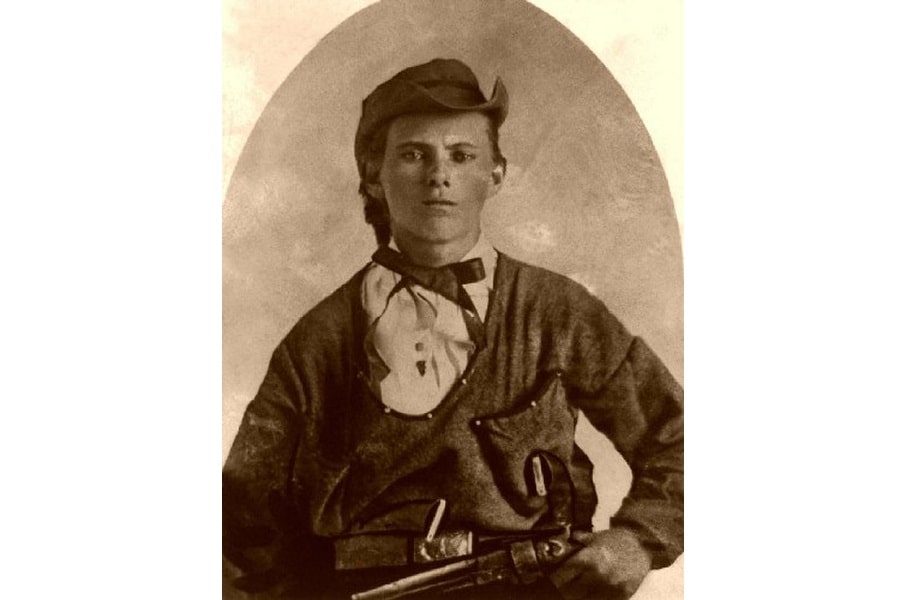
Jesse James, born on September 5, 1847, in Missouri, is one of the most notorious outlaws of the Wild West. During the Civil War, the son of a Baptist minister found himself a part of the reckless adventures of a Confederate guerrilla gang. After the war, he and his brother Frank decided to lead daring criminal lives. The James Brothers were notorious for robberies, primarily targeting banks and trains.
READ MORE: Who Invented Trains? Unveiling the Pioneers of Railway Revolution
Jesse James was a charismatic and popular figure, earning a Robin Hood-like reputation for allegedly redistributing some of the stolen loot to the poor. However, his violent actions led to the deaths of many innocent people.
Eventually, Jesse was betrayed by a fellow gang member, Robert Ford, who shot him in the back of the head in 1882. The life of Jesse James has inspired countless books, movies, and even songs, immortalizing him in the annals of Wild West history.
Robert Leroy Parker: Butch Cassidy, the Cunning Outlaw

Better known by his nickname, Butch Cassidy, Robert Leroy Parker was an outlaw and train robber.
Born on April 13, 1866, in Utah, he became an outlaw at a young age after attracting attention for his cunning actions and ability to evade the law. He eventually joined forces with Harry Longabaugh, also known as the “Sundance Kid,” to form the Wild Bunch gang.
Together, the Wild Bunch committed numerous robberies and heists in the American West. Butch Cassidy’s intelligence set him apart from other outlaws. He would meticulously plan each crime and scout out the target well in advance, making the gang one of the most successful in the Wild West.
Cassidy and the Sundance Kid managed to flee the United States and continue their crime spree in South America until their alleged deaths in a shootout with Bolivian authorities in 1908. Butch Cassidy’s life has been the inspiration for various movies, most notably the 1969 film “Butch Cassidy and the Sundance Kid,” starring Paul Newman and Robert Redford.
Billy the Kid: The Wild West’s Most Misunderstood Outlaw
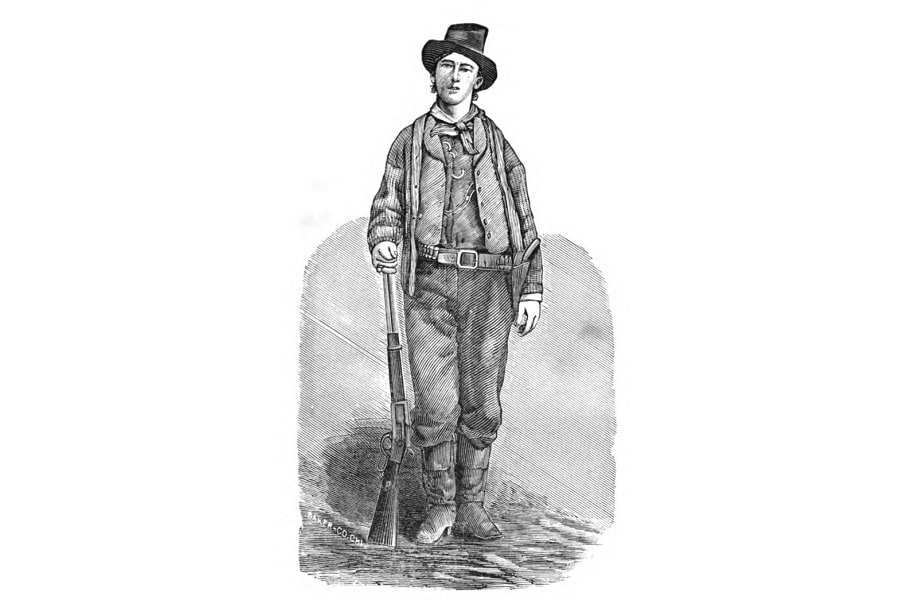
William Henry McCarty Jr., better known as Billy the Kid, was one of the most iconic outlaws of the Wild West era. Despite a relatively short career that involved several high-profile shootouts and prison escapes, the Kid became a folk hero partly because of the media’s portrayal of him as a cunning rogue whose exploits kept law enforcement officers on their toes.
Born in 1859 in New York City, William Henry McCarty Jr. became an orphan as a teenager, dabbled in petty crime, and eventually landed in New Mexico, where he adopted the alias “William H. Bonney.” During his teenage years in New Mexico, McCarty exhibited a talent for using firearms and horsemanship, which would become critical skills later in his criminal career.
Billy the Kid shot his first man at the age of 18, ultimately leading to his involvement in the Lincoln County War, a violent range war that pitted two rival factions of cattle ranchers and merchants against each other. In the aftermath of the bloody conflict and the death of his employer and friend, John Henry Tunstall, Billy the Kid became an outlaw with a price on his head. Thus, he was often pursued by law enforcement agents, including Sheriff Pat Garrett.
Garrett finally captured Billy the Kid in December 1880, and in April 1881, Bonney was convicted of murder and sentenced to hang. However, the resourceful outlaw escaped from jail just days before his scheduled execution, killing two guards in the process. This daring escape cemented his legendary status as a wily and skilled gunslinger.
Unfortunately, Billy the Kid’s luck ultimately ran out on July 14, 1881, when Sheriff Garrett tracked him down and fatally shot him in the chest. The life and death of this fabled outlaw inspired numerous books, films, and songs, cementing his enduring place in the lore of the American West.
READ MORE: How Did Billy the Kid Die? Gunned Down by Sherrif?
Ma Barker: The Matriarch of Criminals
Arizona “Ma” Barker was a mother of four sons who would go on to form the notorious Barker-Karpis Gang in the 1930s. While not actively participating in the robberies, bank heists, and kidnappings that the gang was involved in, Ma certainly provided the support they needed.
Her maternal instincts and refusal to abandon her criminal sons earned her notoriety as a matriarch of crime. In 1935, Ma Barker died in an FBI raid on their hideout in Florida. It’s worth mentioning that Ma’s involvement in the crime was likely exaggerated during the 1930s media frenzy, but it helped label her a female mastermind behind one of the most dangerous gangs in the Wild West.
George Parrott (Big Nose George)
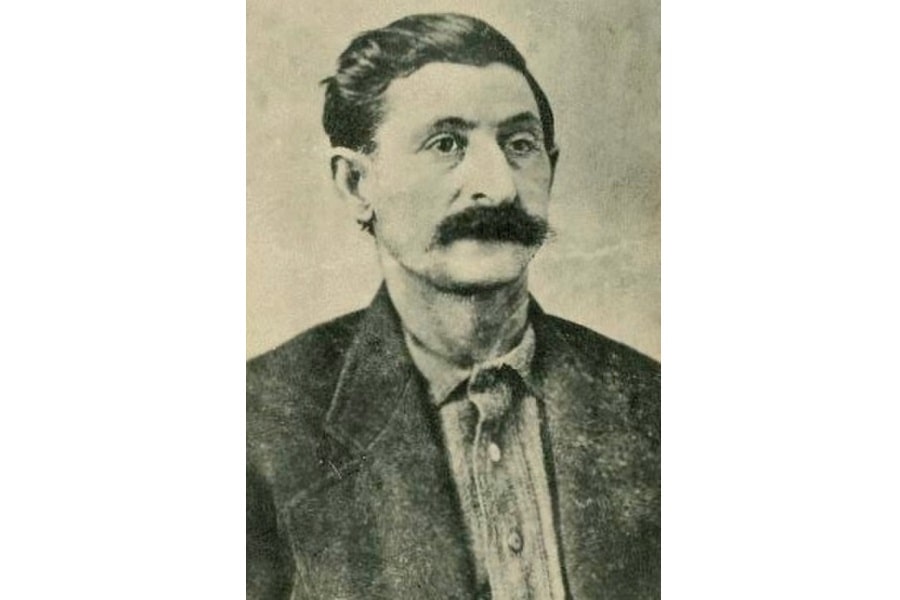
Born in 1834, Big Nose George started his life of crime by stealing horses and rustling cattle alongside the infamous Nevada outlaw, Cap Hatfield. He later formed his own gang and went on to rob stagecoaches and trains throughout the Wyoming Territory.
In 1878, Big Nose George and his gang attempted to rob a Union Pacific train. However, their robbery attempt failed, and they accidentally derailed the train. This mishap turned the Pinkerton Detective Agency and Wyoming law enforcement against them. Once captured, Parrott attempted to escape jail several times, but his luck ran out in 1881, when he was apprehended and hanged.
What sets Big Nose George apart from other Wild West outlaws is the macabre story surrounding his death. After his hanging, Parrott’s corpse was handed over to a local doctor for dissection in the name of medical research. In a ghastly twist, the doctor fashioned a medical bag and a pair of shoes from Parrott’s skin.
Belle Starr: The Female Bandit

The tale of Myra Mabel Shirley Reed Starr is a daring one. Known as the infamous Belle Starr, her name echoed through the Wild West as one of its most legendary and enigmatic female criminals.
Born in 1848 in Missouri, she came from a well-to-do family and was well-educated. However, her life took a dark turn when her brother was killed by Union soldiers during the Civil War.
Afterward, Belle took up with outlaw gangs, even marrying a member of the infamous James-Younger Gang, Jim Reed. After Reed’s death, Belle continued a life of crime with another outlaw, Sam Starr. The couple’s ranch in the Indian Territory (modern-day Oklahoma) became a haven for outlaws and criminals.
Belle performed various criminal activities throughout her life, including horse theft, bootlegging, and harboring fugitives. She was arrested several times, and in 1883, she was convicted and imprisoned for stealing horses.
In February 1889, just days before her forty-first birthday, Belle Starr was ambushed and shot in the back while riding home. Her murder remains a mystery to this day, having never been solved. Her life was later romanticized in both books and films, notably the 1941 film “Belle Starr,” starring Gene Tierney, and the 1980 film “The Legend of the Lone Ranger.”
Wyatt Earp: From Lawman to Outlaw
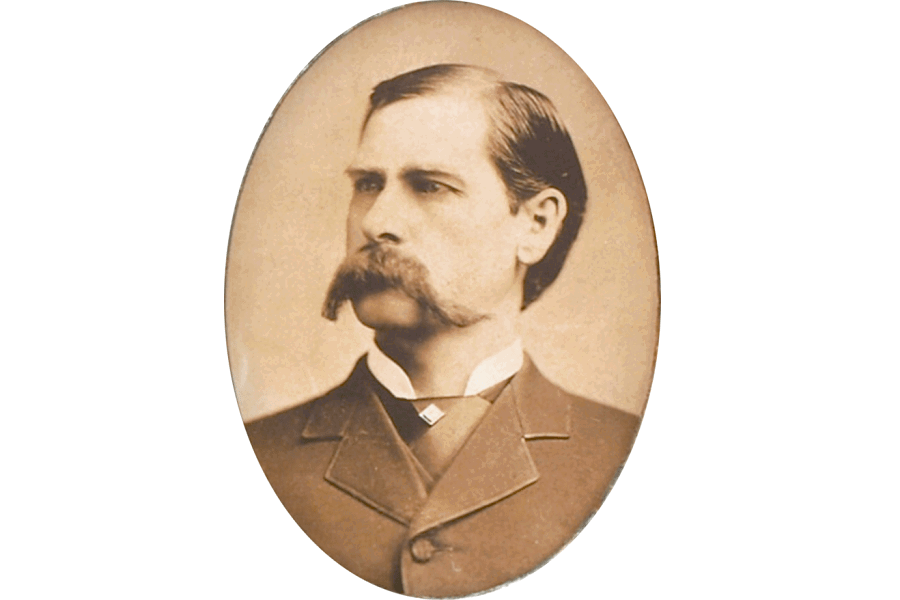
Wyatt Earp is a name that is almost synonymous with the Wild West era, and his life story has inspired endless stories and legends. Born in 1848 in Illinois, Earp worked in various jobs across the West, including buffalo hunter, saloonkeeper, and lawman.
However, it was his role in the infamous 1881 gunfight at the O.K. Corral and his involvement in the vendetta ride that catapulted him into the annals of Wild West history.
Earp’s role as a lawman straddled a fine line between law enforcement and outlawry. He was involved in multiple shootouts, both in line with his duties as a lawman and due to personal feuds. By today’s standards, some of his actions might have been considered excessive and even criminal.
Earp’s later years saw him leave law enforcement and engage in activities such as gambling, horse racing, and prospecting as he sought to secure his place in history. Earp’s death in 1929 marked the end of an era for one of the most famous players in the age of the American Wild West. His life and exploits have inspired numerous novels, television shows, and films.
Tom Horn: The Hired Gun
Tom Horn was a gunman, scout, detective, and assassin whose life moved between the realms of law enforcement and criminal activity. Born in 1860 in Missouri, Horn worked as a scout during the Apache Wars and later as a Pinkerton detective, often charged with tracking down and capturing outlaws.
As a hired gun, Horn became involved in range wars throughout the West, where cattle barons fought against settlers and homesteaders for land and property rights. What makes Horn stand out among Wild West outlaws is his brutal reputation as a hired gun; often paid to eliminate what cattle barons saw as rustlers and threats to their livelihoods.
Horn’s criminal career came to an abrupt end when he was charged with the murder of 14-year-old Willie Nickell, whose father was embroiled in a range war. Despite the controversy surrounding his trial and conviction, Horn was hanged in 1903 for the killing.
Clayton Allison: The Apache Kid
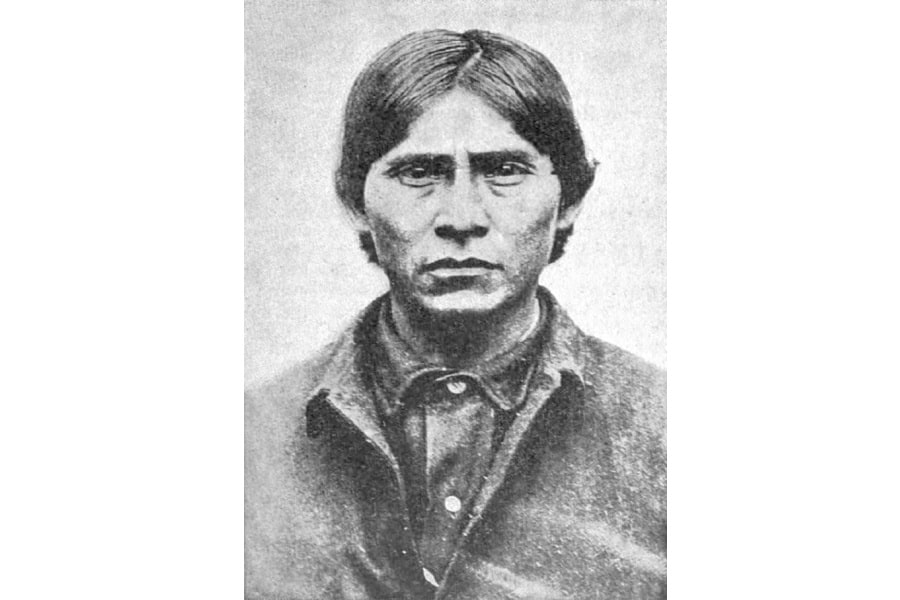
Born in the 1860s, Clayton Allison, also known as the Apache Kid, was an enigmatic figure who straddled the line between lawman and outlaw. Born to a Mexican father and a White Mountain Apache mother, Allison grew up on the San Carlos Apache Indian Reservation in Arizona. As a young man, he joined the U.S. Army as a scout under the tutelage of Sergeant Al Sieber.
However, the Apache Kid’s life took a dark turn when he was involved in a drunken altercation that led to the deaths of an Army officer and other fellow Apache scouts. After narrowly escaping a lynching, he was sentenced to prison, only to escape with other convicts in 1887. From that point on, Allison became an infamous outlaw, accused of rustling, robbery, and murder.
Despite his crimes, some saw the Apache Kid as a victim of prejudice and injustice. His ability to evade capture by both military forces and Apache police became legendary, and his story has been immortalized in books, films, and even comic books.
John Wesley Hardin: The Wild West’s Deadliest Gunfighter
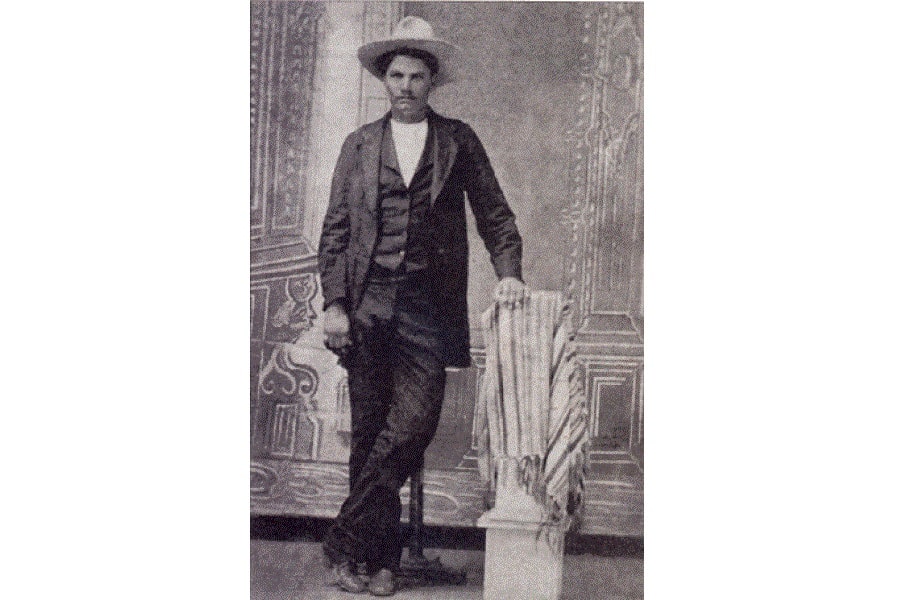
Born in 1853 in Texas, John Wesley Hardin was named after the founder of the Methodist denomination, but his actions in life were far from saintly.
Hardin claimed to have killed more than 40 men during his life, and though some of these claims may have been exaggerated, there is little doubt that he had a propensity for violence. It is said that he even killed a man for snoring too loudly in a hotel room. His prowess with a six-shooter made him one of the most feared men of his time.
In 1878, Hardin was captured by law enforcement and sentenced to 25 years in prison for murder. However, he was released after just 17 years, claiming to have reformed and studied law in prison. Despite his claims of a new life, he was ultimately shot to death in 1895 by a jealous lover, putting an end to his violent reign.
Sam Bass: The 19th Century’s Premier Train Robber
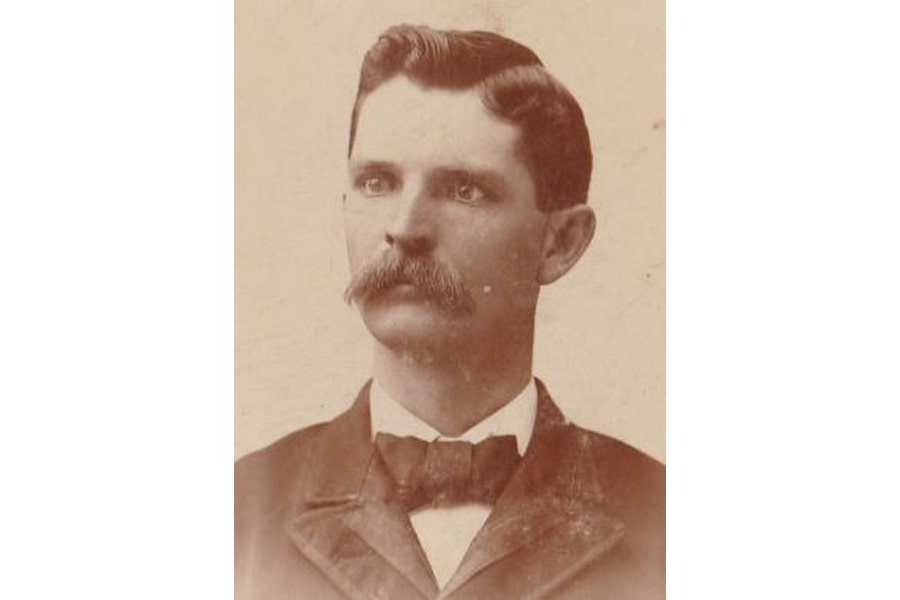
Born in 1851 in Indiana, Sam Bass gained notoriety as a premier train robber of the 19th century. Before becoming an outlaw, he worked as a cowboy, drove a stagecoach, and even raced horses in Texas. However, the latter led to financial ruin, prompting Bass to turn to a life of crime.
Alongside a gang of men, Bass began by robbing stagecoaches but soon graduated to more lucrative train robberies. In 1877, his fame grew after he pulled off the largest single gold and currency robbery in the Union Pacific Railroad’s history. The heist yielded earnings of over $60,000 (equivalent to roughly $1.3 million today).
The daring robbery made Bass a wanted man, pursued relentlessly by the Texas Rangers. He evaded capture multiple times, but his luck ran out in 1878 during a shootout with the Rangers in Round Rock, Texas. Bass was critically wounded and captured, dying from his injuries two days later.
Dave Rudabaugh: The Man Who Crossed Paths with Billy the Kid
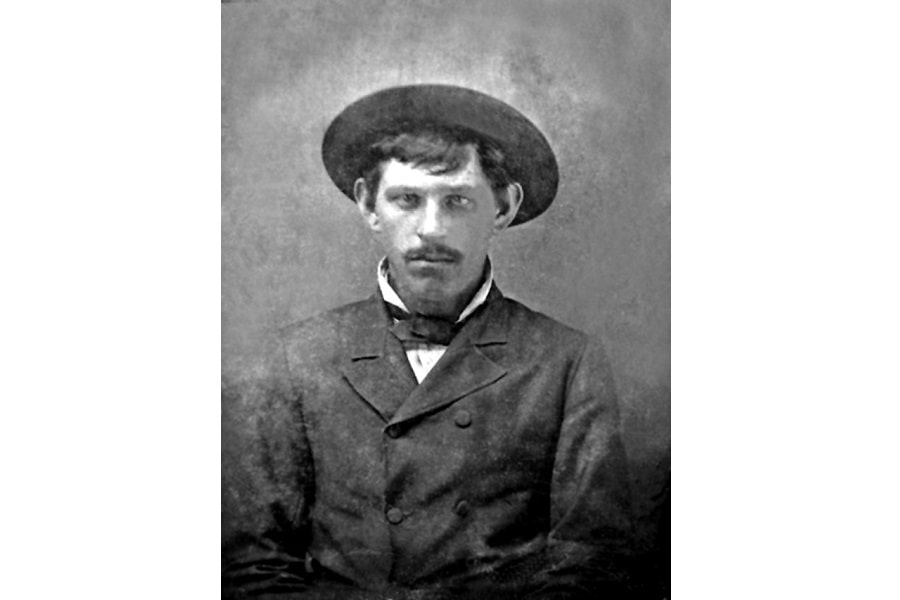
Dave Rudabaugh, nicknamed “Dirty Dave,” was a notable outlaw and gunfighter who became infamous for his criminal exploits in the American Southwest. Born in Missouri in 1854, he grew up in a tumultuous household that eventually led him to a life of crime. Rudabaugh’s criminal career included horse theft, stagecoach robbery, and train robbery, earning him a name among the historic outlaws of the Wild West.
Rudabaugh famously crossed paths with Billy the Kid when they both became members of the gang known as the “Rustlers.” It is believed that Billy the Kid and Rudabaugh had a falling out, which led to their separation.
Later, after being imprisoned in Mexico, Rudabaugh was attacked by a mob of local villagers and decapitated in 1886. His association with Billy the Kid and the brutal nature of his death have made Dave Rudabaugh an enduring figure in Wild West lore.
Cassidy Girls: The Wild West’s Outlaw Sisters
The Cassidy sisters, Charlotte and Laura, were infamous female outlaws who defied gender roles. Born in Arkansas to a family of Irish immigrants, the sisters pursued a life of crime together, starting with cattle rustling and eventually working their way up to bank and train robbery.
The Cassidy sisters were skilled horsewomen and sharpshooters, holding their own ground in a male-dominated world and making a name for themselves as members of the infamous “Hole in the Wall Gang.” Their daring exploits ultimately led to their arrest when they were captured robbing a train in 1893.
Both sisters were sentenced to prison, but they were released early due to their good behavior. Little is known about their lives after their release from prison, but their legacy lives on as a rare example of female outlaws in an era dominated by men.
READ MORE: A Woman of the Wild West: The Life of Mary Hallock Foote
Cherokee Bill: The Violent Outlaw of Indian Territory
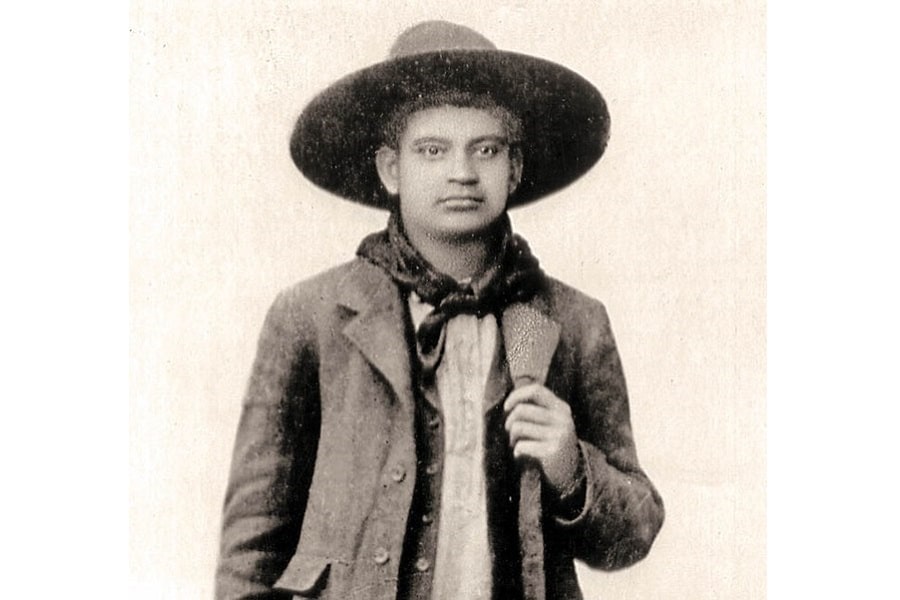
Crawford Goldsby, better known as “Cherokee Bill,” was a notorious outlaw who operated primarily in Indian Territory (present-day Oklahoma). Born in 1876 to a Cherokee mother and a buffalo soldier father, Goldsby dealt with racism throughout his youth, an issue that may have contributed to his later violent tendencies.
Cherokee Bill was known for his ruthlessness and hot temper, eventually becoming part of the infamous Cook Gang. He participated in numerous robberies, shootouts, and murders, quickly gaining a reputation as a dangerous man to cross.
In 1895, he was captured and sentenced to death for shooting and killing a man during an attempted jailbreak. At the young age of 20, Goldsby was hanged for his crimes, leaving behind a short but violent legacy.
Rose Dunn: The Rose of Cimarron
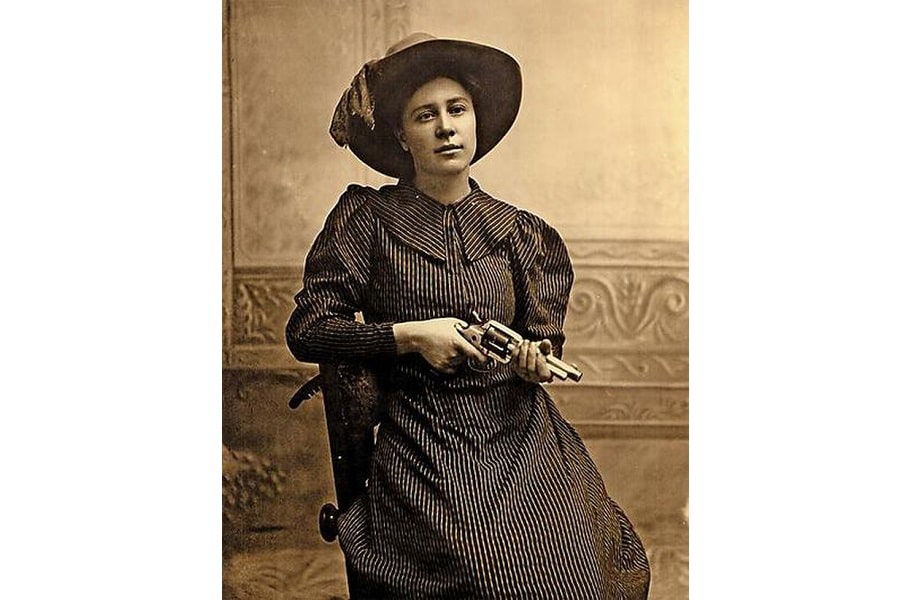
Rose Dunn, known as the “Rose of Cimarron,” was born in Oklahoma in 1878. Despite her young age, Dunn led a life entangled with some of the most notorious outlaws of her time. Her brothers were part of the infamous Wild Bunch, providing her with an intimate connection to the criminal world.
Dunn’s true claim to notoriety came from her romantic relationship with George “Bittercreek” Newcomb, an associate of the Wild Bunch. It is believed she often provided the gang with supplies and support, including assisting Newcomb in evading capture at one point.
However, her loyalty ultimately faltered when she set up an ambush that led to Newcomb’s death, allegedly because her brothers wanted to collect the reward money. After the ordeal, Dunn left her life of crime behind and lived a quiet life until her death in 1955.
Sundance Kid: Butch Cassidy’s Partner in Crime

Harry Longabaugh, better known as the “Sundance Kid,” was an American outlaw and member of the infamous Wild Bunch gang. Born in Pennsylvania in 1867, Longabaugh’s first criminal conviction came at the age of 20, when he was caught stealing a horse. While in jail, he adopted the nickname “Sundance Kid,” based on the Wyoming town of Sundance, where he was imprisoned.
After his release, the Sundance Kid began a life of crime that included stagecoach and train robberies alongside the notorious outlaw Butch Cassidy. Their well-organized and brazen crimes gained them enormous notoriety throughout the American West.
In 1901, the pair fled to South America, where it is believed they continued their criminal exploits. The circumstances of the Sundance Kid’s death remain a mystery, but many accounts suggest he died alongside Butch Cassidy in a shootout with Bolivian authorities in 1908. The pair’s exploits were later immortalized in the 1969 film “Butch Cassidy and the Sundance Kid.”
Tom “Black Jack” Ketchum: The Terror of the Southwest

Thomas Edward Ketchum, known as “Black Jack,” was an American outlaw who operated primarily in the Southwest. Born in Texas in 1863, Ketchum began his criminal career as a rustler, eventually forming his own gang. They targeted trains, stagecoaches, and banks throughout New Mexico and Texas, leading to their formidable reputation as one of the most dangerous groups in the region.
Black Jack’s end came in 1899, when he was captured during a failed train robbery. Authorities convicted him of numerous crimes, including train robbery and murder.
On April 26, 1901, Ketchum was hanged for his crimes, making him the only person in New Mexico’s history to be executed for train robbery. His life of crime and dramatic demise continue to fascinate the public and serve as a lasting reminder of the violent and lawless era that was the Wild West.
Conclusion
The Wild West was an era of lawlessness, adventure, and larger-than-life figures, both heroic and villainous.
Their lives and exploits have become ingrained in the American psyche as a reminder of a bygone era when the line between right and wrong was often blurred. These outlaws have inspired countless stories, movies, and folktales, demonstrating that although the Wild West has faded into the past, its lore and legends remain.
References
Milner, Clyde A.; O’Connor, Carol A.; Sandweiss, Martha A. (1994). The Oxford History of the American West. Internet Archive. New York : Oxford University Press.
Hine, Robert V.; John Mack Faragher (2000). The American West: A New Interpretive History. Yale University Press.
Aron, Steven, “The Making of the First American West and the Unmaking of Other Realms” in Deverell, William, ed. (2007). A Companion to the American West. Wiley-Blackwell. pp. 5–24.
Merrill D. Peterson, “Jefferson, the West, and the Enlightenment Vision”, Wisconsin Magazine of History (Summer 1987) 70#4 pp. 270–280
Hornsby, Stephen (2005). British Atlantic, American Frontier: Spaces Of Power In Early Modern British America
Allen, Charles W. (2001). From Fort Laramie to Wounded Knee: In the West That Was. University of Nebraska Press. p. 262.
Horsman, Reginald (1981). Race and manifest destiny: the origins of American racial anglo-saxonism. Harvard U. Press. p. 238.
“Women Of The Wild West”. History Detectives. PBS. Retrieved February 11, 2022.
The women. Joan Swallow Reiter. Alexandria, Va.: Time-Life Books. 1978.